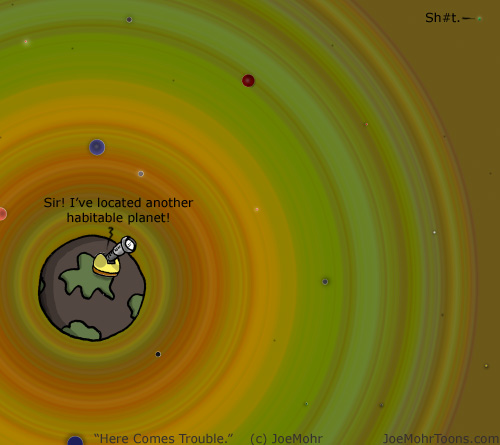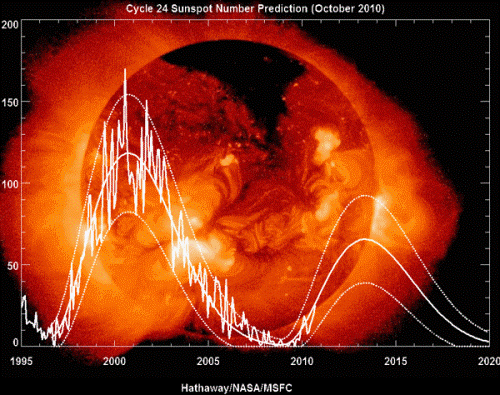
First discovered in late December 2005 by Robert McMillan of the Spacewatch Program, YU55 (its full name is 2005 YU55) is set to pass between the Moon and Earth between November 8 and 9, at a distance of 325,000 km (just over 200,000 miles).
Although many asteroids pass between the Moon and Earth every year, 2005 YU55 is notable for its sheer size: over 400 meters (>1200 feet) in length, which is about the length of an aircraft carrier. But space observers are saying that it’s even bigger.
According to NASA’s JPL website:
“Although classified as a potentially hazardous object, 2005 YU55 poses no threat of an Earth collision over at least the next 100 years. However, this will be the closest approach to date by an object this large that we know about in advance and an event of this type will not happen again until 2028 when asteroid (153814) 2001 WN5 will pass to within 0.6 lunar distances. ” [emphasis added]
Classified as a C-type asteroid*, 2005 YU55’s “flyby ” at 0.85 lunar distances is close enough to offer astronomers a rare chance to observe a large asteroid in action from the ground. The asteroid will be tracked for an estimated 8 hours by optical, near infrared and radar instruments, including high-resolution imaging from the Arecibo Observatory’s radio telescope installation in Puerto Rico.
*Asteroids are classified according to their spectra and composition, and fall within three general categories: C-type (carbon), S-type (stony), and M-type (metallic)
Previous observations of the asteroid have shown it to be a fairly dark, mostly spherical object with a rotational period of about 20 hours. Despite its relative darkness (being mostly composed of carbon), the asteroid will have a “visual brightness of 11th magnitude and should be easily visible to observers in the northern and southern hemispheres”, according to the Jet Propulsion Lab (JPL) website.
This animations shows the Earth-Moon flyby geometry of 2005 YU55 on Nov. 8 and 9 (article continues):

Asteroids are a class of small Solar System bodies — sometimes called planetoids or protoplanetoids (which is a more accurate term for the larger ones) — in orbit around our Sun.
Historically, the term ‘asteroid’ (meaning “star-like”) was used to describe any non-planetary, non-cometary object. However, more recent research has revealed that some of these objects have fairly volatile surfaces, similar to most comets. More commonly nowadays, the terms ‘asteroid’ refers to the relatively small, rocky-icy and/or metallic bodies of the inner Solar System, and extending as far out from the Sun as Jupiter.
Many astronomers assert that most asteroids over 100 meters in diameter are “rubble piles” that accumulated after collisions between other asteroids.

The largest known asteroid is Ceres which has a diameter size that is 28% of the Moon’s diameter (and is the most spherical of the large asteroids).
Large numbers of asteroids are in orbit around planets Jupiter and Neptune and are referred to as trojans. The majority of known asteroids occupy the asteroid belt between Mars and Jupiter, but a sizable population are near-Earth asteroids. They are though to be the ancient remnants of shattered planetesimals (which were formed in our Sun’s nebula, but never grew large enough to form planets).
Top image: NASA
Asteroid Geometry Animation: NASA/JPL website


tuesday 7pm-11pm
What time should we be watching for this so I can pass it on to everyone
whats its ETA??? when would be the best time to go out and have a look for it???
This link should tell you what you need to know. You won’t be able to see it, unless you have the right equipment. It won’t be visible to the naked eye. http://astrobob.areavoices.com/
My apologies folks foe omitting the fact that a basic telescope would be need to view the asteroid. NASA/JPL left this tidbit out of its web news story.
The ‘ETA’ will vary according to your location on the planet relative to its rotation and its timing with the asteroid flyby…the link to to the JPL site has links to that info, but I should have made it more prominent. I promise to be more thorough next time.